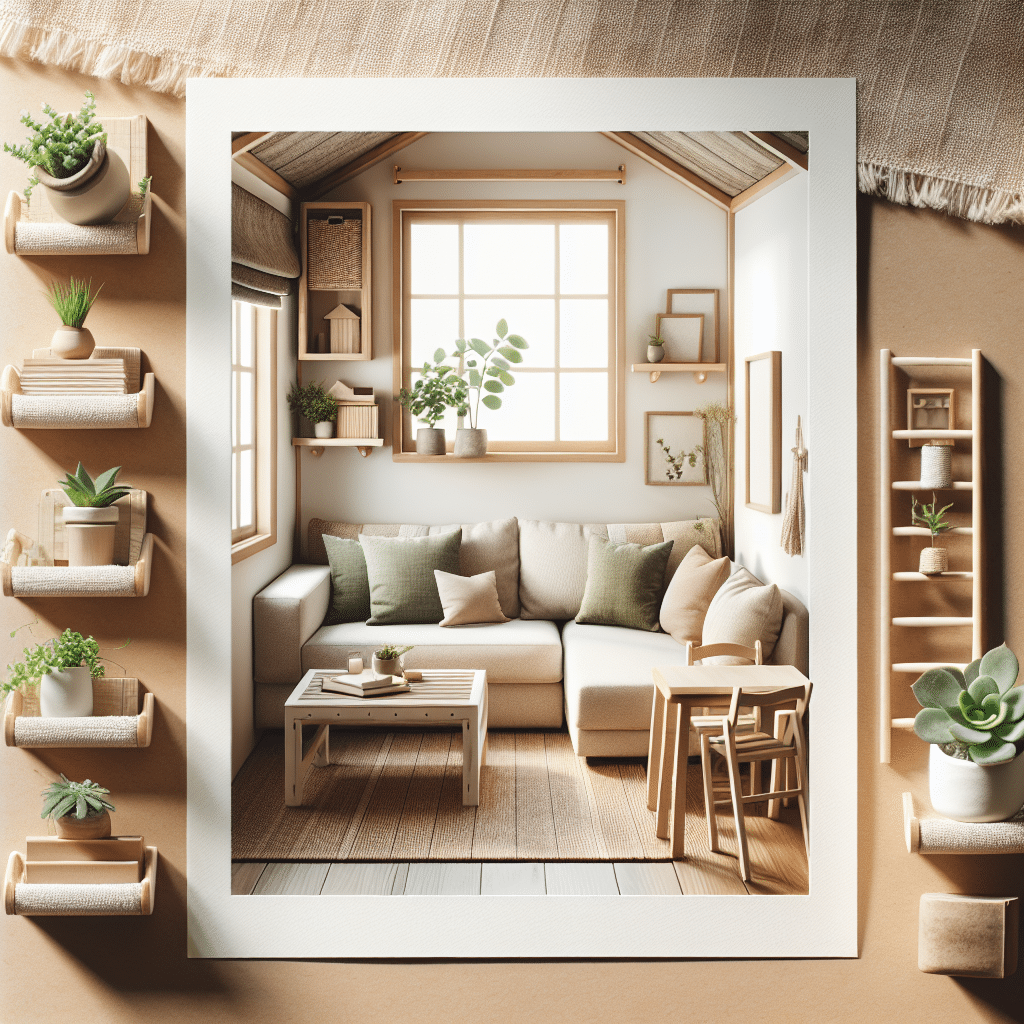The Importance of Sustainable Upholstery in Tiny Homes
When creating a tiny home, every element matters, especially furniture. Upholstered pieces take up space, provide comfort, and enhance aesthetics, making their sustainability essential. Choosing sustainable upholstery not only benefits the environment but also promotes healthier living spaces in compact homes.
1. Understanding Sustainable Upholstery
Sustainable upholstery refers to fabrics and materials that are produced with minimal environmental impact, prioritize renewable resources, and promote ethical labor practices. This involves everything from the fibers used to the manufacturing processes, including dyeing and finishing.
1.1 Eco-Friendly Materials
-
Organic Cotton: Free from synthetic pesticides and fertilizers, organic cotton is grown using sustainable farming practices. It’s versatile and can be used for various upholstery styles.
-
Hemp Fabric: Hemp is one of the most eco-friendly fibers due to its rapid growth and minimal need for water or pesticides. Hemp upholstery is durable and naturally resistant to mold and mildew.
-
Linen: Made from flax plants, linen is biodegradable and requires less water compared to cotton. Its natural fibers give it a unique texture and appearance, ideal for rustic-style tiny homes.
-
Bamboo Fabric: Bamboo grows quickly and requires no pesticides, making it a sustainable option. The fabric is soft, breathable, and has natural antibacterial properties, enhancing the hygiene of small spaces.
-
Recycled Materials: Upholstery that utilizes recycled fibers, such as PET bottles or reclaimed textiles, reduces waste and lowers the need for new raw materials.
2. Choosing Sustainable Upholstery Options
When opting for sustainable upholstery, consider the following factors:
2.1 Fiber Content
Ensure the upholstery fabric is derived from natural or recycled materials, avoiding synthetic fibers like polyester or nylon, which are petroleum-based and non-biodegradable.
2.2 Durability
Choose fabrics that promise longevity. Sustainable upholstery should withstand wear and tear, especially in tiny homes where space-efficient designs might lead to more usage.
2.3 Production Methods
Look for certifications such as OEKO-TEX Standard 100 or GOTS (Global Organic Textile Standard), which ensure that the fabric was produced without harmful chemicals and under ethical labor conditions.
3. Stylish Sustainable Upholstery Ideas for Tiny Homes
In tiny homes, aesthetics are crucial since the space is limited. Here are some upholstery ideas that combine sustainability with style:
3.1 Earthy Tones with Organic Cotton
Use organic cotton upholstery in earthy hues to create a warm and inviting atmosphere. Colors like terracotta and moss green can enhance the natural elements within a tiny home.
3.2 Textured Linen for a Modern Look
Incorporate linen upholstery in muted tones for a modern touch. Its texture adds depth to a small space, and its breathability ensures comfort during varying temperatures.
3.3 Versatile Hemp Options
Hemp upholstery works wonderfully for multifunctional furniture such as storage ottomans or collapsible chairs. Its robustness makes it ideal for daily use while promoting a sustainable lifestyle.
3.4 Bamboo-Woven Panels
Bamboo can be woven into decorative panels that add character to walls or furniture. Use this sustainable material in combination with other upholstery for cushions and pillows.
4. DIY Sustainable Upholstery Projects
For those interested in hands-on approaches, there is a myriad of DIY sustainable upholstery projects.
4.1 Reupholstering Found Furniture
Explore thrift stores or garage sales for old furniture. Reupholstering them with sustainable fabrics not only keeps materials out of the landfill but adds character to your tiny home.
4.2 Pillows and Cushions
Sew pillow covers from leftover scraps of sustainable materials, creating a unique, customizable touch. Use natural dyes from plants for added eco-friendliness in coloring your fabrics.
4.3 Upcycling Techniques
Incorporate upcycling methods to transform outdated textiles into usable upholstery. This can include sewing old clothing or linens into new couch covers, ensuring that waste materials find new life.
5. Benefits of Sustainable Upholstery in Tiny Homes
Transitioning to sustainable upholstery in tiny homes offers numerous advantages:
5.1 Healthier Indoor Environment
Sustainable fabrics often contain fewer chemicals, contributing to improved indoor air quality—a considerable asset in the smaller confines of a tiny home.
5.2 Carbon Footprint Reduction
Using sustainable materials significantly lowers your carbon footprint. It promotes an eco-conscious lifestyle, aligning with the values of minimalism often associated with tiny home living.
5.3 Aesthetic Appeal
Sustainable upholstery does not compromise on style. Many modern designers create beautiful organic patterns and colors that can complement any tiny home aesthetic.
6. Maintenance of Sustainable Upholstery
To maintain the longevity of sustainable upholstery, proper care is essential.
6.1 Cleaning Methods
Opt for eco-friendly cleaning solutions that do not contain harsh chemicals. Many sustainable fabrics can be spot cleaned with mild soap and water or a vinegar solution.
6.2 Regular Maintenance
Regular vacuuming extends the life of upholstery by preventing the buildup of dust and allergens. Brush natural fabrics to maintain their integrity and appearance.
7. Finding the Right Suppliers
When searching for sustainable upholstery materials, consider sourcing from companies that emphasize ethical practices and environmental stewardship. Research local suppliers or online stores focused on sustainability.
-
Local Artisan Workshops: Explore local craftsmen who specialize in sustainable designs, which can also boost your tiny home’s decor with unique, handmade pieces.
-
Green Certifications: When selecting suppliers, look for certifications indicating their commitment to sustainable practices. This includes fair trade and eco-labels.
8. Trend Insights in Sustainable Upholstery
Stay informed on current trends in sustainable upholstery. Biophilic design, which emphasizes incorporating natural materials and elements, is gaining popularity in tiny home interiors.
-
Nature-Inspired Patterns: Fabrics that mimic natural elements, such as leaf motifs or stone textures, are ideal for embracing the outdoor feel, bridging the inside with the outside seamlessly.
-
Adaptive Reuse: The trend toward adaptive reuse—using old materials creatively—continues to grow, encouraging tiny homeowners to innovate sustainably.
Engaging in sustainable upholstery for tiny home furniture not only champions environmental responsibility; it also enhances the overall aesthetics and functionality of a limited living space. Prioritizing these options fosters a connection between design choices and conscious living.
